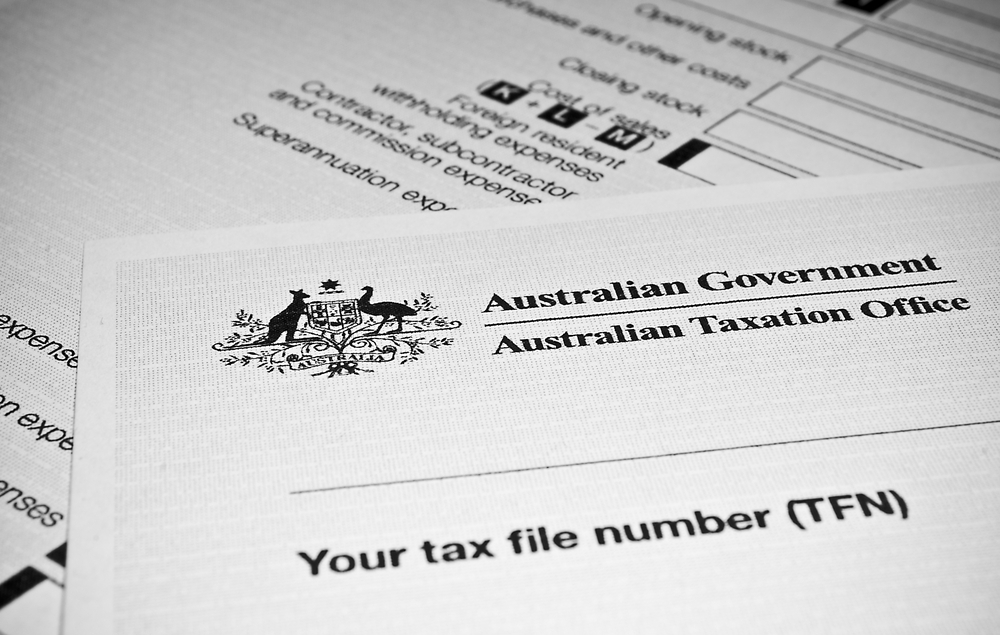Super Strategies for Gen X Business Owners: What You Need to Know
Why is superannuation limited?
Superannuation is a powerful tax planning tool, especially for Gen X family business owners approaching retirement. It allows you to move personal wealth into a low taxed environment, where earnings are taxed at only 15% — and sometimes 0% in retirement.
The tax benefit comes with limits. The Federal Government has contribution caps so superannuation isn’t used as a tax shelter for the wealthy. Some self-managed super funds have a fund balance over $500M.
These limits are challenging for Gen X, who did not always enjoy super guarantee levy contributions when they started working. They then started a business and missed ongoing super guarantee levy contributions. They then missed the generous transitional rules to make outsized contributions around 2007 that the boomers enjoyed when the government started to introduce harsh limits, and those same people are now beginning to look to retirement from 60 onwards.
Additional taxes enforce the super limits. So, when people say your ability to contribute to superannuation is limited, they are really saying that your ability to contribute to superannuation, and not pay penalty taxes, is limited. If you exceed the cap — even accidentally — you can pay up to 47% tax on the excess. Understanding the rules is essential to avoid unnecessary penalties and optimise retirement wealth.
So, for many business owners, the goal is to put as much money as they can into superannuation without paying the penalty taxes – called excess contributions tax.
What is excess contributions tax?
There are two types of superannuation contributions: concessional (pre-tax) and non-concessional (after-tax). Each has a separate cap and its own rules.
For excess concessional contributions, the excess amount is included in your assessable income and taxed at your marginal tax rate, with a 15% offset to account for the tax already paid in the super fund. This is covered in section 291-15 of the Income Tax Assessment Act 1997 (ITAA 1997).
For excess non-concessional contributions, the rules are harsher. If you don’t elect to withdraw the excess, you will be taxed at 47% on the amount above the cap under section 292-85 of ITAA 1997. If you do elect to withdraw the excess, the earnings on those contributions are taxed at your marginal rate under section 292-105.
What are concessional contributions?
Concessional contributions are made from pre-tax income. These include:
- Employer Superannuation Guarantee (SG) contributions
- Salary sacrifice contributions
- Personal contributions claimed as a tax deduction
In the past, you could only make concessional contributions through your employer, either by salary sacrifice or the superannuation guarantee levy. Those days are gone. You can now receive a salary from your business and make personal superannuation contributions.
The advantage of making personal superannuation contributions is that they are not part of your salary for payroll tax purposes. You can receive a higher dividend from your business, which is not subject to payroll tax, and then make a personal concessional super contribution, which is not subject to payroll tax.
A concessional super contribution is taxed at 15% inside the superannuation fund (unless you are a high-income earner subject to Division 293 tax, which increases the tax rate to 30%).
Business owners often make significant concessional contributions closer to retirement, as they may not have benefited from compulsory super contributions during earlier stages of their careers. Many start-up entrepreneurs reinvested profits into their businesses and neglected personal superannuation. As retirement nears, and the business generates good profits, they often look to “catch up” on lost time and secure their financial future.
What are non-concessional contributions?
Non-concessional contributions are made from your after-tax income and are not taxed again in the fund. These contributions are not tax-deductible and are subject to a higher annual cap.
Non-concessional contributions are often used when a business owner receives a large after-tax sum, such as from the sale of a business, investment property, or surplus cash from retained profits. These contributions can be an important estate planning and tax minimisation strategy.
Some business owners will enjoy the small business capital gains tax concessions, and they can allow even greater super contributions after sale.
Contribution caps over time and in the future
The current concessional contributions cap is $30,000 per person per year, up from $27,500 on 1 July 2024. This change is based on indexation under section 960-285 of ITAA 1997.
The annual non-concessional contribution cap is four times the concessional cap. So, it is currently $120,000 from 1 July 2024 (previously $110,000).
If your superannuation fund holds more than $1.9m, you can no longer make non-concessional contributions. However, you can make a concessional contribution at any time until you are 75.
What is the bring-forward rule?
The bring forward rule is excellent, but complex.
The bring-forward rule allows individuals under 75 to make up to three years’ worth of non-concessional contributions in a single financial year. If a person contributes more than the annual cap, the rule is triggered automatically.
This is particularly useful for business owners who have sold assets or built up retained earnings and want to shift wealth into a more tax-effective structure before retirement.
To qualify, your total super balance at the previous 30 June must be under $1.9 million, and you cannot have triggered the bring-forward rule in the last two financial years.
Example: Mark and Sophie selling a rental property
Mark and Sophie are both 61 and run a successful electrical contracting business in Osborne Park. Over the years, they have prioritised growing the business and have relatively low super balances. They recently sold a long-held rental property in Attadale for $1.4 million, giving them after-tax proceeds of around $1 million.
In June 2025, each of them contributes $110,000 to superannuation from their cash proceeds — using the full FY2025 non-concessional cap.
Then in July 2025, with the cap expected to increase to $120,000, they trigger the bring-forward rule and contribute an additional $360,000 each.
Over a two-month period, Mark and Sophie have contributed $470,000 each to super—$940,000 in total, without exceeding any cap or paying additional tax. The funds are now in a low-tax environment and available for pension planning from age 65.
Non-concessional contributions phase-in threshold
The bring forward rule is reduced as you get close to $1.9m.
Your total superannuation balance (TSB) as at the previous 30 June must be below a certain level to make a non-concessional super contribution. The cap phases out as your TSB increases, and once your TSB hits the threshold, you cannot make any further non-concessional contributions.
The phase-in thresholds are:
- If your TSB is less than $1.68 million: full bring-forward of $360,000 available (from 2025–26)
- If your TSB is between $1.68m and $1.79m: two years’ worth of contributions allowed ($240,000)
- If your TSB is between $1.79m and $1.9m: only one year of contributions allowed ($120,000)
- If your TSB is $1.9 million or more: no non-concessional contributions allowed
These thresholds are set under sections 292-85(2) and 292-85(3) of ITAA 1997.
Catch-up concessional contributions
From 1 July 2018, individuals with a total super balance below $500,000 at the prior 30 June can carry forward unused concessional caps for up to five years. This is covered under section 291-20(3) of ITAA 1997.
This rule is great for Gen X business owners. In particular, those who had lumpy income years or prioritised business reinvestment over super contributions.
Example: Catch-up strategy for a business owner
Amelia, 58, owns a fish processing centre in Fremantle. She had minimal super contributions during COVID-19 and spent the last few years rebuilding her business. In the 2025 financial year, she had strong cash flow and wants to catch up.
Her unused concessional contributions total $42,000 over the past four years. With the 2026 cap increasing to $30,000, she can contribute $72,000 in concessional contributions in one year and claim the full amount as a tax deduction.
This significantly reduces her tax, while allowing her to rebuild her super.
The downsizer contribution
Introduced in 2018 and expanded in 2022, the downsizer contribution allows people aged 55 or over to make a one-off, post-tax contribution of up to $300,000 from the sale of their principal residence. This is allowed regardless of your total super balance or age-based caps, under section 292-102 of ITAA 1997.
To qualify, the home must have been owned for at least 10 years and must have been your main residence for all or most of that time.
Example: Downsizer in practice
Brian and Susan are both 66 and run a family business in Balcatta. They decide to downsize their family home and move to a smaller residence nearby. After selling their home, they have $1.5 million in proceeds.
Each of them contributes $300,000 to their SMSF’s using the downsizer contribution. These contributions don’t count toward their non-concessional cap and are allowed even though Brian’s super balance is over $2 million. The remaining proceeds can be invested outside super.
This strategy allows business owners who are asset-rich but super-poor to transfer more wealth into the tax-free pension phase before retirement.
The $3m super tax
Many business owners are concerned about the proposed tax for super fund balances over $3m.
And while a lot of the law is concerning, the new tax amounts to a final tax rate of 30%, so compared to 47%, superannuation is still attractive.
Getting the investment right
Superannuation is an excellent investment vehicle, but it is not an investment. A super is basically a trust that has elected to comply with some rules and enjoys tax concessions as a result.
The tax savings are irrelevant if you chase the amazing super tax concessions and lose everything in your super due to a bad investment. So, getting a good investment advisor on board to help you choose right investments for your super fund is essential.
The investment in your super fund must also be considered alongside other investments, like the family home mortgage, which is generally not tax deductible, or business real estate, which can also be sold tax-free.
Super as a long game
With the reduced super limits, we always remind clients of the long game. The limits are limited. So, as tax advisors, we always recommend a long-term strategy to use the limits along the way to all you contribute the most to your super fund.
Final thoughts
Superannuation contribution caps might seem restrictive, but for informed business owners over 50, they provide a valuable framework to shift wealth into a tax-advantaged environment.
Used wisely, the bring-forward rule, catch-up concessional contributions, and downsizer rules can allow you to contribute over $1 million into super in a short time frame — legally and without penalty.
If you fold these strategies into the small business capital gains tax concessions, you can very quickly increase the superannuation fund balance.
If you’re planning to sell a business, downsize your home, or reduce your tax, now is the time to get advice and plan ahead.
Talk to Perth’s specialists in business and superannuation
At Westcourt Family Business Accountants, we work exclusively with family-owned businesses to deliver strategic superannuation advice tailored to your circumstances.
Whether you’re looking to prepare for retirement, sell an asset, or optimise your tax position, we can help you make the most of the contribution rules and avoid the traps.
Contact us today to design your FY2025–26 super strategy.






